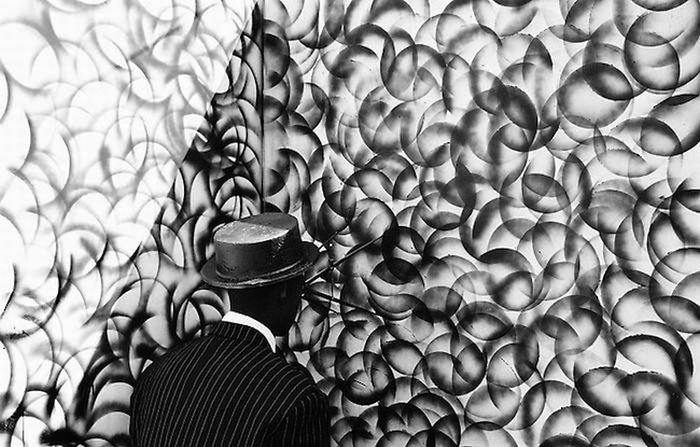|
|
Street Art Graffiti Comes Alive By Robin Rhode
|
Working predominantly with everyday material like charcoal, chalk and paint, Rhode started out creating performances that are based on his own drawings of objects that he interacts with. He expanded and refined this practice into creating photography sequences and digital animations. These works are characterized by an interdisciplinary approach that brings aspects of performance, happening, drawing, film and photography together. Rhode often returns to his native South Africa, creating work in the streets of Johannesburg and continuously registering the traces of poverty and social inequality. An outstanding characteristic of his works is his addressing of social concerns in a playful and productive manner, incorporating these issues into his practice without simplifying or judging them.
Reminiscent of practices of street culture, Rhode usually works in public spaces, using walls, public basketball courts or just the street as his “canvas”. His preferred materials are easily accessible ones like charcoal and paint. As a result, his works stand out through their simplicity and their formal clarity, emphasizing the idea over lavishness of production. Rhode transforms simple shapes into elements of narratives, interacting with only imagined presences. This narrative practice goes back to an initiation ritual at South African high schools – that Rhode himself experienced - where new students are forced to draw and interact with their drawing. Rhode’s reference to this event takes this social gesture further into a playful mode of addressing cultural phenomena. Rhode’s stories often include a moment of conflict and possible failure. The black and white 26-panel photographic work Juggla for instance depicts a circus-like clown. Prodding at this form of popular entertainment, the faceless character is at the mercy of the wealthy, juggling or holding nothing. With Juggla, Rhode references Minstrel Carnivals from the Caribbean and South Africa where troupes, made up of members from a particular neighborhood of the city, are assembled and each is expected to parade and perform for its local community in exchange for food and drink. Rhode also pays homage to the fervent utopian ideals of the Bauhaus, implicating Oscar Schlemmer’s seminal Triadic Ballet from the twenties, a performance experiment created in the Bauhaus studios in the absence of a theatre space, balancing “emotional impulses” with an agenda of political agitation. His drawings of objects like a bicycle, a motorbike, a car, or of abstract shapes and patterns are employed as physical elements in a story, often alluding to the act of creation itself as in Promenade (2008).
|
|









